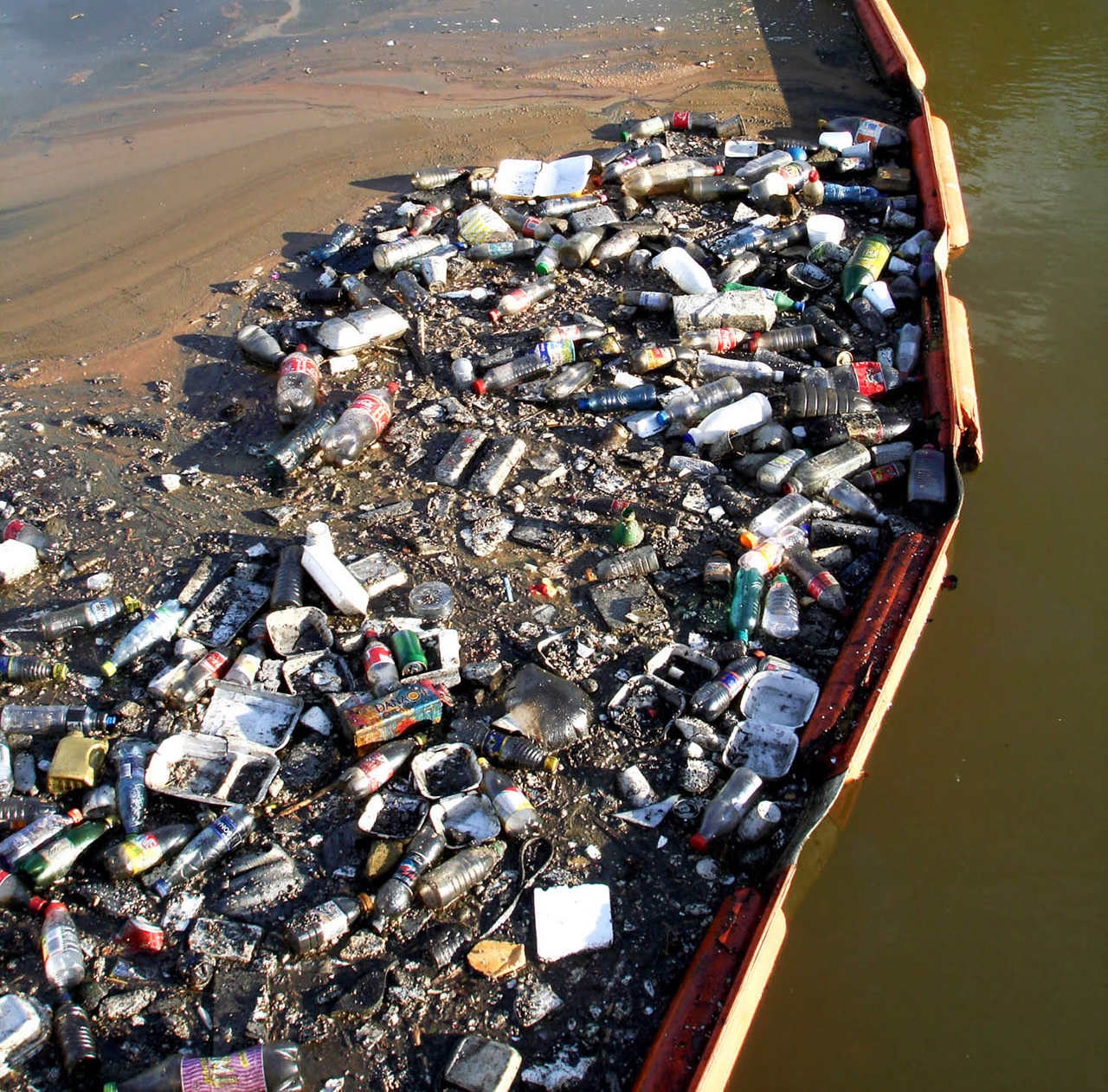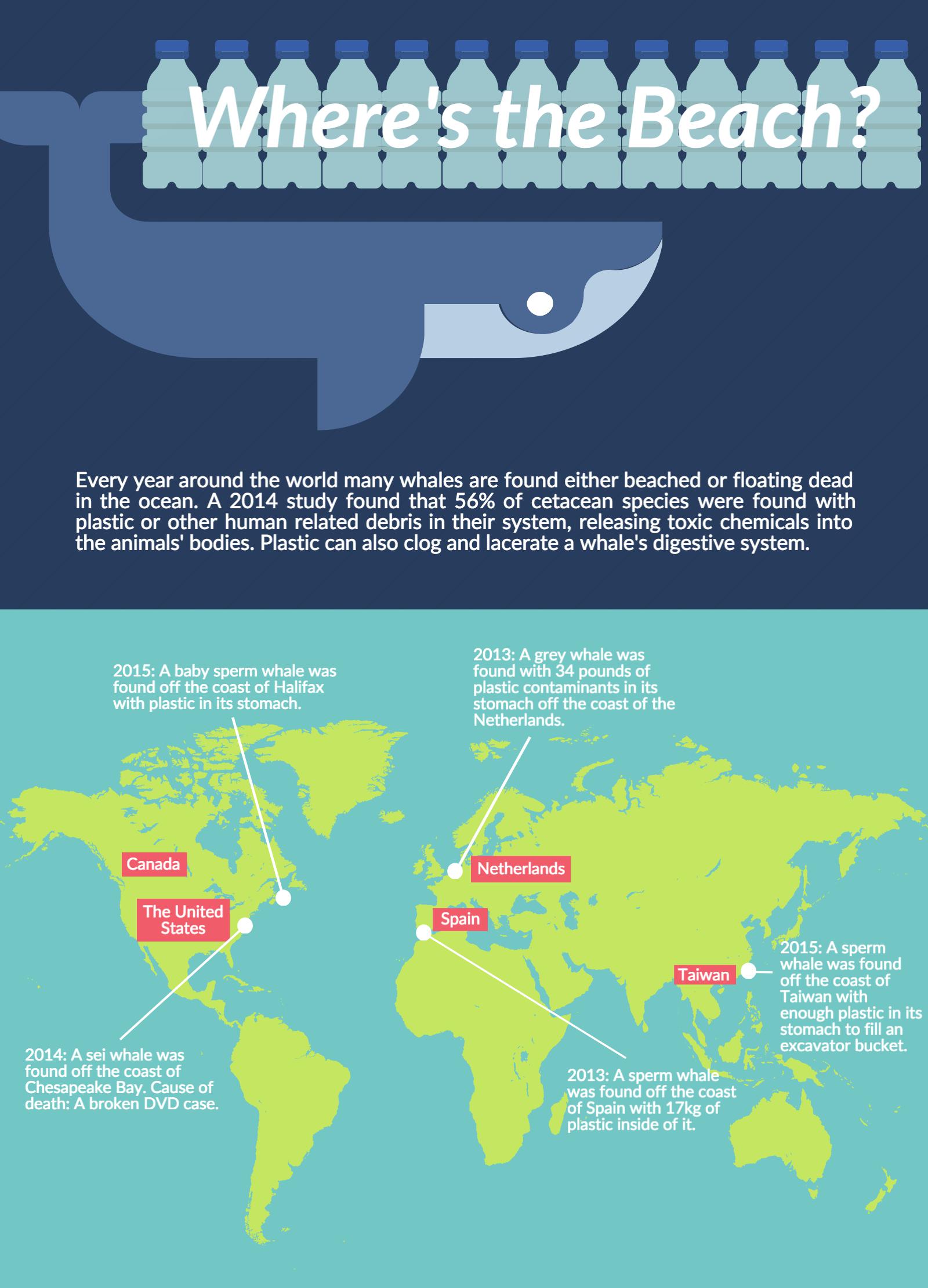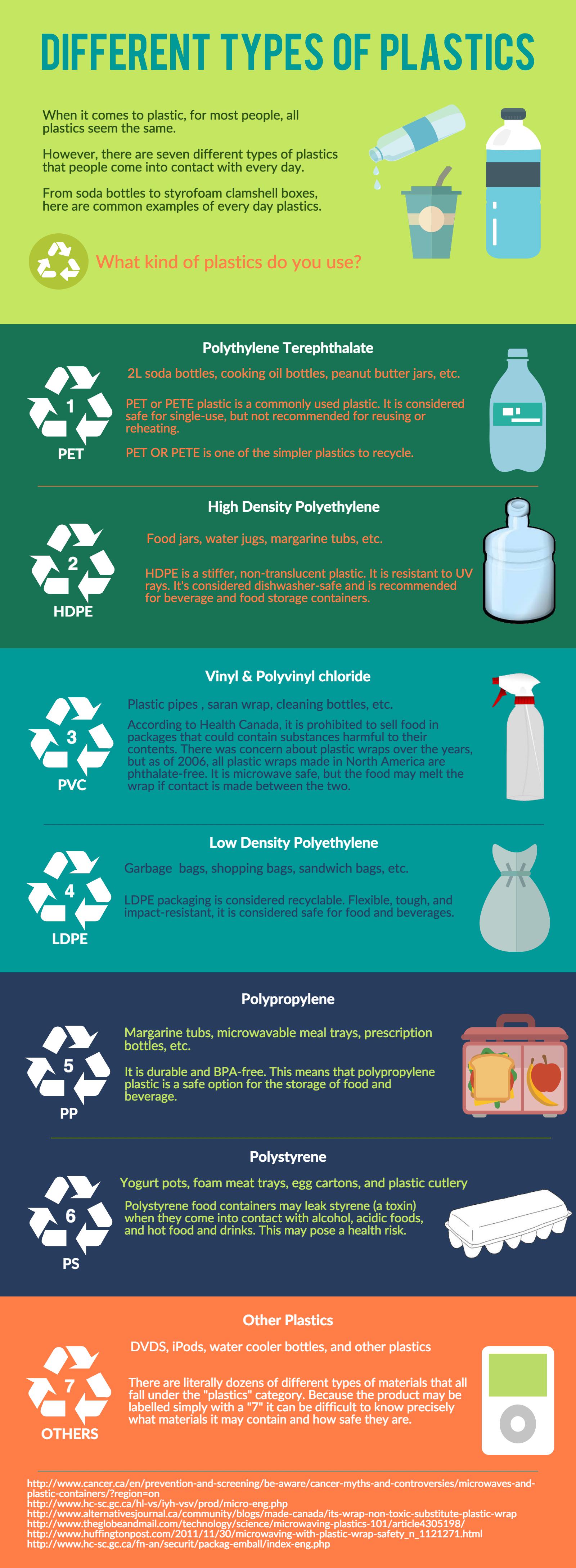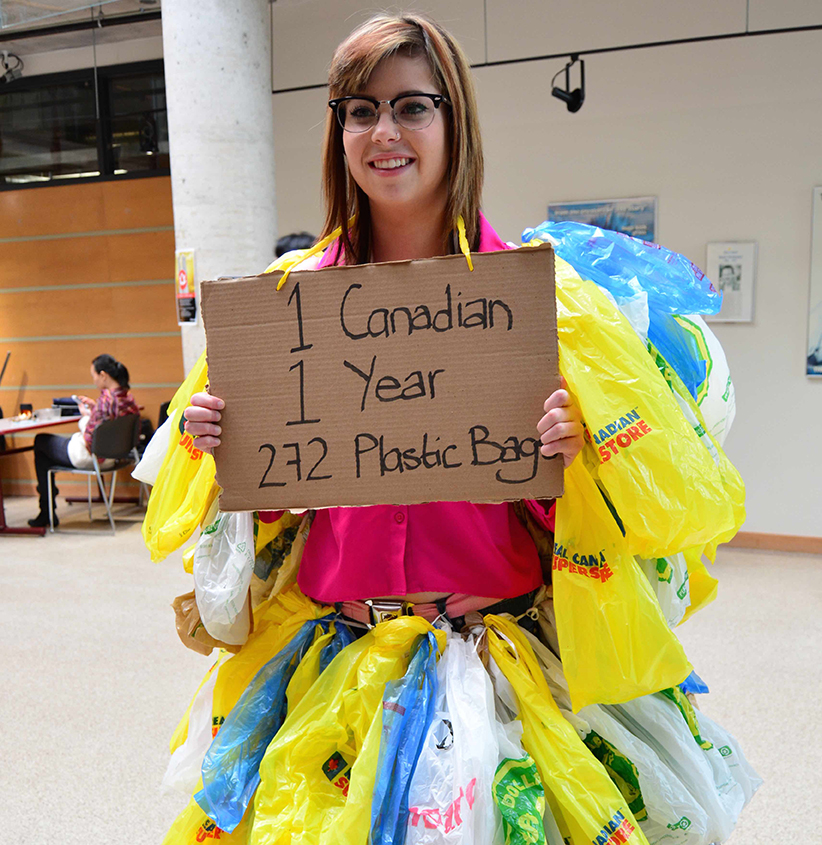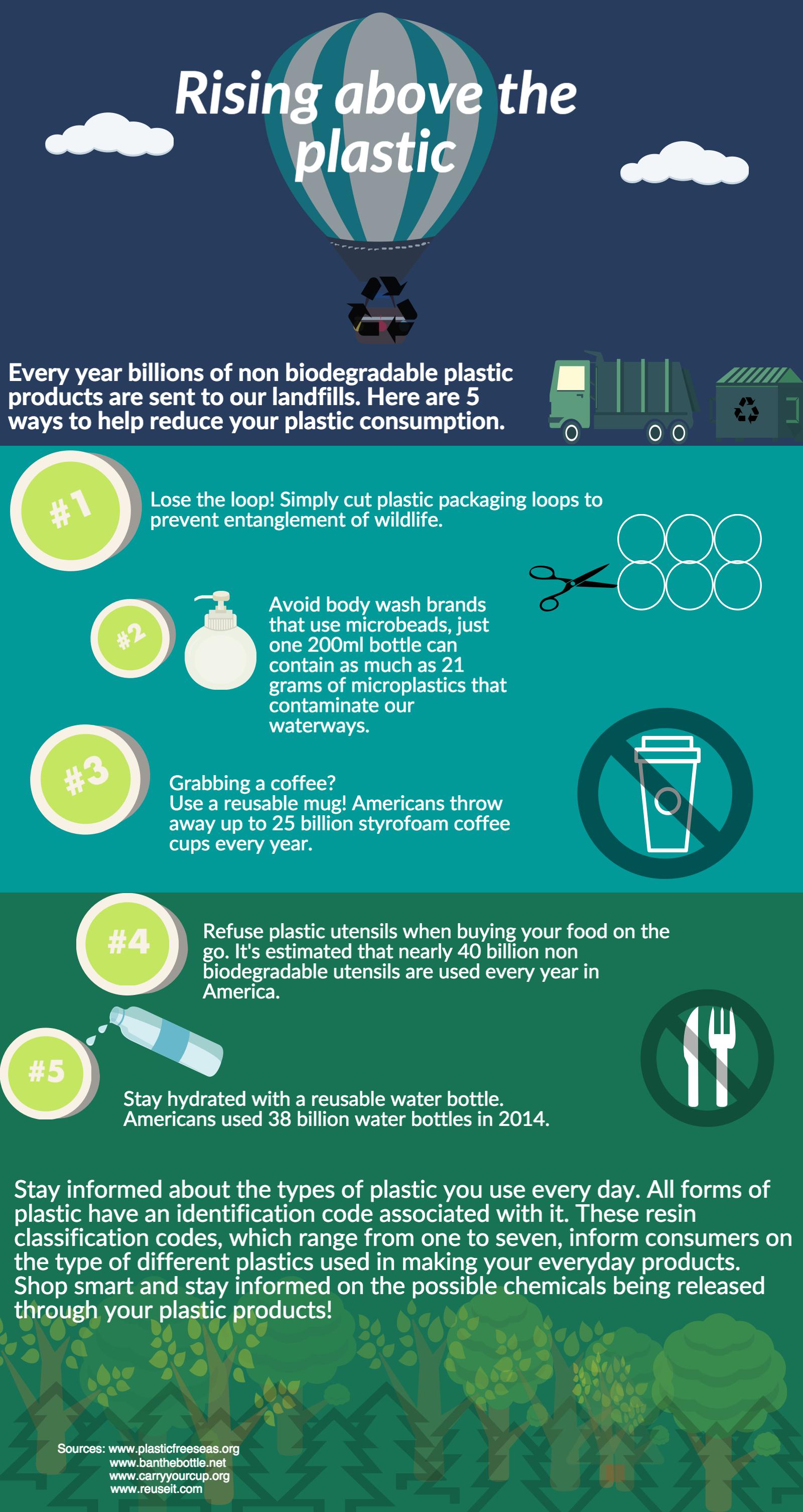Introduction
In the largest of our oceans, there is a giant patch of garbage made up of toxic plastic waste. Some reports say it’s twice the size of the United States, and in 10 years it’s going to double. As the mangled mess of man-made pollutants floats on, it leaves a wake of destruction on the environment.
Animals that were plentiful many years ago are now endangered, delicate ecosystems have become underwater graveyards, fish that we eat have ingested plastic particles. A new report says that if the rate of pollution carries on as it is currently, there will be more plastic than fish in our oceans by 2050.
On the surface, we’re losing our green space to waste dumps. And in those dumps, the billions of water bottles we’ve consumed don’t degrade like you’d think; they break down into smaller fragments, never completely disappearing. These particles seep into the ground and pollute our precious groundwater reserves. Out of sight, out of mind isn’t working anymore.
This project aims to educate readers on just how pervasive plastics are in our world and the impact they have on the environment.
#MayContainPlastic
Impact on Animals
Did you know it’s possible to eat every day and still starve to death? That’s what happens to turtles and countless other marine animals that consume plastic bags mistaken for jellyfish. Eating a plastic bag makes a marine animal feel full, without providing any actual nutrition. Starvation isn’t the only issue; animals suffer blockage of the intestines and piercing of the intestinal wall. They can also die because of toxic chemicals that were used to create the plastic, or that were absorbed during the plastic’s journey through the ocean. Half of all sea turtles on the planet have ingested some form of plastic. Ninety per cent of all seabirds have consumed plastic. The fish that we eat consume plastic, essentially poisoning themselves. Pollution in the ocean is affecting all marine life, and, in turn, it affects humans as well.
BirdsBirds can do some amazing things, partaking in the miracle of flight on a daily basis with bones as light as a feather. While these animals have many incredible abilities, digesting plastic is not one of them. New research suggests that 90% of the world’s seabirds have consumed plastic that still remains in their digestive organs. There are even some studies that suggests all seabirds will be eating plastic by 2050. Birds can mistake small plastic pellets for fish eggs, as well as other prey. Similar to turtles, plastic blocks the digestive tract and can cause them to either choke or starve to death. Not to mention the poisonous levels of toxicity that the plastic contains. You may be wondering, how is it that 90% of all birds are ingesting plastic? How could that number even be possible? Birds begin ingesting harmful plastic as soon as they hatch when their mothers unknowingly regurgitate plastic to feed their young. One study found 98% of all Laysan Albatross chicks were fed some sort of plastic. It’s hard to predict what a devastating impact this could have on birds and the environment. |
 Courtesy of U.S. Fish and Wildlife Service Headquarters |
TurtlesCarrying your house on your back can be a huge weight on your shoulders. For a turtle, this is life. But a big issue for these creatures is ingesting plastic. According to a recent study conducted by the University of Queensland 52% of all seas turtles have ingested some form of plastic. A primary part of a turtle’s diet is jellyfish, but they have trouble differentiating them from trash — a floating plastic bag, for instance, can look similar to a turtle’s prey. Ingested plastic can block digestion and cause starvation. Aside from starvation, a turtle can also die from toxic chemicals that were used when creating the plastic, or other toxic chemicals that were absorbed by the plastic in its journey through the ocean. Apart from digestion, plastic can affect turtles in a much more visible way. A common six-pack ring can get caught around a turtle and as the turtle grows its shell eventually grows around the ring, deforming the turtle. This stunts the growth of many internal organs and the animal eventually dies a slow, agonizing death. We encourage you to check out the story of Peanut, a turtle who got a six-pack holder stuck around her at a young age, changing her life forever. |
 Courtesy of The National Oceanic and Atmospheric Administration (NOAA) |
Sea Lions & SealsSeals have often been called the dogs of the ocean for their playful demeanor, swimming alongside surfers, sometimes even hopping on board, or playing with actual dogs at the beach. However, the food they have to eat is far from kibble and, in the wild, the hoops they have to go through aren’t hula. In the late 1970s, scientists from the National Marine Mammal Laboratory observed that plastic entanglement was killing 40,000 seals a year. In the last 30 years, the Northern Fur Seals population has decreased by 50% due to pollution in the ocean. This isn’t exclusive to seals. It’s all pinnipeds, seals, sea lions and walruses. Last June, the Vancouver Aquarium reported approximately 400 sea lions entangled in debris in the wild. To free each animal costs roughly $2,000. In addition to ingesting and entanglement, it also affects their way of living as well. As pollution increases, so do greenhouse gas emissions, causing the planet’s air and water temperatures to increase, while turning the ocean more acidic. Scientists at the NOAA have predicted that by 2050, summers in the Arctic may be ice-free. Many animals, such as seals and sea lions are literally getting tangled up in our mess. |
Whales
Polar BearsWhile the animals in the ocean are being plagued by our plastic pollution, the wildlife on land don’t have it much easier. As animal populations decrease due to plastic consumption, the animals next in line on the food chain in turn get affected as well. You may have noticed a trend developing, and it’s quite simple, no one is immune. It’s hard to see any similarities between a small child who loves sushi, and a fierce polar bear in the Arctic. But when it comes to the dangers of plastic pollution, they are in the same boat.
Plastic in the food chain poses one of the greatest risks to endangered polar bears. They mainly live off seals and fish, two animals that are highly impacted by plastic pollution. After a polar bear gives birth, she stays with her cubs in her den for six months without eating. She survives off the seal fat her body has stored, fat that is essentially poisoned with plastic. In this video, Tanja Marusic takes a look at the devastating impact of plastic on this iconic animal. |
Humans
At this point, we hope you’re fully aware of just how serious plastic pollution is for wildlife —how a simple plastic bag can mean life or death for a young animal. However, even if you’re someone who doesn’t care for wildlife, the fact remains that you’re at the top of the food chain. The salmon that you ate had a life before it ended up on your plate. There’s a pretty good chance that at one point in its life, it came into contact with plastic, and ingested microbeads, which essentially poisoned the fish. You are what you eat has never been more true. Did you know that due to plastic pollution, the fish you eat contain chemicals that could cause testicular cancer and lower sperm counts, or raise the chance of breast cancer for women? One of the most talked about chemicals is BPA. Check out the graphic below to find out how it might put you at risk.
Plasticopolis
Plastic is everywhere. It’s in our oceans, our homes, in the food we eat. And all of this plastic has a detrimental impact on our natural resources. In 2008 alone, 34 million tonnes of plastic was disposed of in the US, and 86% of that plastic was found in landfills, taking up green space and leeching into ground-water. Plastic is also found in our oceans and Great Lakes, with a huge impact on our fishing industries. In this section, we will explain how plastic is eating away earth’s raw materials.
AirYou’d think plastic is just something you can hold in your hand, but what if we told you it’s something you ingest every day. The theory we are going to tell you now may sound like a wise lesson from a retired karate master, but, by looking at the name, we get our first clue as to what the grasshopper effect is all about. Chemicals found in pollution, including plastic, are picked up by hot air and travel through the air currents, eventually ending up in colder climate zones. So much so that 80% of toxins found in the Arctic come from countries other than Canada. These toxins are called POPs (persistent organic pollutants), and they end up in fish and smaller wildlife, which in turn end up in larger animals affecting the food chain as a whole. Studies have found that Inuit have the highest levels of toxic chemicals in their bodies compared to any other humans. And that’s no coincidence — it’s all thanks to the grasshopper effect. Watch the video to the right for more information. The process of making plastic also impacts the air you breathe. In order to make plastic bags, bottles, and containers you need to burn fossil fuels like oil and natural gas. This releases pollution or toxic emissions into the environment. Some toxic emissions and toxic air pollutants can cause cancer or serious health effects. |
Land
Fifty percent of plastic is used once and then thrown away, and the average American throws out about 185 pounds of plastic per year. Plastic takes at least 400-1,000 years to decompose, meaning that virtually all plastic products that were ever made still exist today, in our landfills and oceans, with the exception being the plastic that’s been incinerated. In Canada, 1.5 billion dollars is spent per year on garbage disposal. And, the average North American will throw away 600 times his or her adult weight in garbage. That could equate to over ninety-thousand pounds. Out of the total garbage disposed, 80% of municipal and industrial solid waste ends up in a landfill. According to a Stewardship Ontario report, about 175,000 tons of plastic waste was landfilled instead of recycled in 2009 in Ontario.
According to Environment Canada there are over 10,000 landfill sites in Canada, with 32 located in Ontario and 12 alone in the Halton Region. One of the leading examples of a well-operated landfill is the Halton Waste Management Site which is located in Milton and is 87 football fields in length. In the Thinglink below, check out what the Waste Management Coordinator of Halton’s landfill, Nicole Levie, has to say about plastic, as well as Sheridan College’s Chemistry Club president Kiran Mascarenhas.
WaterYou may have heard of garbage patches: massive forms of plastic floating around our oceans. There are conflicting reports on how big they are–Texas, double the size of Texas, the entire United States–but according to the marine debris program it is difficult to estimate their size because it is always changing with the ocean currents and winds. So how much plastic is in our oceans? A recent study estimates there are more than 250,000 tons of plastic afloat at sea. According to National Geographic, “these patches are almost entirely made up of tiny bits of plastic called microplastics.” Microplastics are deteriorated pieces of larger plastic fragments broken down by UV radiation that can affect our resources in a negative way. And they’re not just an issue for our oceans. They’re also invading fresh water. Sherri Mason, a chemist at the State University of New York, has been conducting a study on microplastics in the Great Lakes. Mason and her team found that the plastic counts in parts of Lake Ontario are just as bad as those in the most polluted parts of the ocean. Watch her interview to hear more. |
A study on the Asia-Pacific region found the cost of damage from marine debris on fishing, shipping, and marine tourism to be $1.265 billion U.S. every year–and up to 80% of that debris is plastic. Plastic microbeads are also having a detrimental impact on our fish and fisheries. Most microbeads are approximately one millimetre in size. They are so small they are found in some toothpaste. While they are effective in cleaning your skin or shining your teeth, they are harmful to the environment. Because they’re so tiny, they go right through filters at sewage treatment plants. Take a look at the info graphic below to see how the microbeads in some commonly used products impact our environment.

Advisors to the Great Lakes Fishery Commission are concerned that fish and wildlife mistake the microbeads for food, which harms their health and is a dangerous pathway for pollutants to enter the food web. The committee recently passed a resolution to prohibit the sale of cosmetic or personal care products containing plastic microbeads. In 2015, President Barack Obama signed a bill that bans the selling and distribution of products containing microbeads in the United States. The bill is signed now, but doesn’t go into effect until 2017. The President signed the bill with the quality of the country’s waterways in mind. Environment Canada is currently conducting a review of microbeads in consumer products. The Ontario government is currently looking at Bill 75, the Microbead Elimination and Monitoring Act. The bill would prohibit the manufacture or addition of microbeads in personal products. The bill states that every year the Minister of Environment and Climate Change will ensure that tests of the Great Lakes are analyzed for the presence of microbeads. It will likely take effect in Ontario in the next two years.
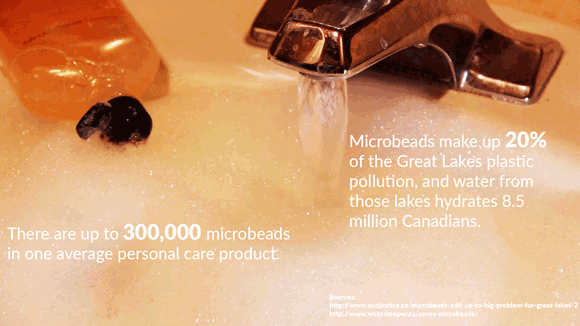 |
Your Plastic Footprint
You may remember the idea of the “carbon footprint,” measuring how much pollution and carbon dioxide you create in your day-to-day lives. Driving to work, mowing the lawn, and even running the lights for too long throughout the day all add up to your own personal carbon footprint. Now replace carbon with plastic. It’s the same thing, but instead of measuring the amount of pollution caused by burning fossil fuels, the plastic footprint movement measures pollution caused by plastics. The Plastic Disclosure Project is the leading environmental watchdog that aims to regulate the amount of plastic pollution that is caused by companies worldwide. The brainchild company is based in both California and Hong Kong and its goal is similar to many other environmental groups, such as the WWF, but with a direct focus on plastic pollution on land and water.
Plastic Timeline
Plastic is both an important and an extremely damaging man-made material. Over the last 150 years, we’ve gone from having found a way to synthesize an ivory substitute to creating plastic-based interplanetary vehicles to explore our solar system. Check out the timeline below to see the history of plastic.
One thing to remember about plastic is that with our interconnected world, every person can impact everyone. Scientist Jessica Jambeck’s research shows that eight million tons of plastics are being dumped in our waters globally per year. Sixty percent of the plastic waste polluting the world’s waters come from China, the leading polluter of plastic.
Until recently, China was a paid dumping zone for multiple countries like the United States, Philippines, Hong Kong, Denmark, Thailand, and Japan. In 2010, China started refusing waste from other countries due to its own issues with pollution. Indonesia, Philippines, Vietnam, Sri Lanka, Thailand, Egypt, Malaysia, Nigeria, and Bangladesh are also on the list of leading polluters created by Jambeck.

But some countries have the right idea. Sweden is becoming one of the world’s leaders in burning plastics and other recyclable products and converting it into energy. In Sweden, 32 plants produce energy, sorting waste to maximize energy. This success has made it possible for Sweden to use half of the waste it produces for energy while the other half is recycled. Forty percent of homes in Sweden are heated by waste energy. Also, because of Sweden’s low pollution and consumption of waste, the country purchases waste from other European countries like the United Kingdom, Ireland, Norway, and Italy to create more energy.
The reason this is successful is partly due to strict environmental laws in Sweden. If other countries follow this pattern, we could have initiatives like Sweden’s waste energy plants. Unfortunately, not every government’s environmental laws are as progressive as Sweden’s, but some companies are taking matters into their own hands. In Indonesia, an enterprising inventor transforms plastic waste into fuel for vehicles by using augmented furnaces. Also, Grammy award winning artist Pharrell Williams co-founded a clothing company called Bionic Yarn that uses plastic materials fished out of the oceans. Williams’ co-designs denim clothing with the materials made from the plastics.
Even smaller steps to minimize plastic waste can help out in our communities. At the end of the day, it’s all about the little things: picking up litter, recycling and sorting waste, utilizing the garbage and waste systems, using fewer products with plastics, and thinking about our actions that may impact the world.
Legislation in Canada
In recent years, concern over the safety of plastics has led to changes in legislation. Many laws and regulations have been implemented in Canada and North America over the years to ensure that the plastics used by consumers are safe.
The big concern, prior to 2006, was plastic wrap – and the chemicals it could potentially release when heated. This caused a general concern because many people who heat their food covered with plastic film (saran wrap) might be consuming chemicals along with their lunch. Plastic films used to be made from PVC, which had phthalate, a chemical that would make the wrap more flexible. But that same chemical is known to potentially disrupt hormones – and to leach from plastic when exposed to heat. Concerns over this led to a legislation that made it mandatory for the plastic wraps for food use to be phthalate-free. Since 2006, plastic wraps in North America have been made with LDPE, a safer material.
Types of Plastics
Few of us stop and think about plastic or, more specifically, about the different kinds of plastics that are a part of our everyday lives. Learn more about them in the graphic below.
Materials (including plastics) that could be used for packaging food are controlled by the Canadian government and Health Canada under Division 23 of the Food and Drugs Act and Regulations. According to the official Health Canada website and Section B.23.001 of the Act, it is prohibited to sell food in packages that could impart harmful substances to their contents. The food sellers must meet these requirements and submit information of their packaging materials to test their chemical safety.
Strangely, however, there is no legislation that guarantees the safety of products you might buy and use in your home to store food in your fridge or cupboards. Plastic containers that are sold without food are not tested by Health Canada and there is no indication as to what substances should be used to make them, although the Consumer Product Safety Bureau investigates any concerns if these products are reported to pose a health risk. As these materials are unregulated, it’s buyer beware. When in doubt, glass or metal are, generally, safer choices (but don’t put that metal container in your microwave!).
A Plastic Economy in OntarioRecycling is a business and the value of plastic is directly correlated to the price of oil. So when oil prices go up or down so does the value of plastic. Over 185 pounds of plastics are disposed of per year and 95% of the plastic material, worth 80-120 billion US dollars, is lost to the economy after a short, one-use cycle. The Circular economy is a new term that has emerged within the waste management and plastics industries. It’s not just about the environment anymore – it’s about business. Ontario’s Minister of the Environment and Climate Change has released a proposed bill Waste-Free Ontario Act, Bill 151, focusing on the diversion of waste.
And that’s good news. Rafael Santos, a professor in Sheridan College’s chemical and environmental program, says a circular economy starts with a solid waste diversion program. |
| Halton Waste has a diversion rate of around 60%, making it one of the most environmentally friendly waste facilities in the province. Halton Waste has already started to expand its diversion plan to accept more types of plastics, which can then be sold to different companies. Halton Waste now diverts lids, tubs, and clamshell-type packaging in its circular economy program. A recent Ontario Management Waste Association (OMWA) study is encouraging companies to rethink waste. Plastic products are a major landfill contributor in Ontario. Ultimately, part of the progress is due to economics. Waste plastic is a commodity – and has a value that fluctuates with the stock market. And that means many companies would sooner purchase and use it than have it sit idle in a landfill. The companies that produce plastic waste also save money by selling their product rather than paying to dispose of it. |
Student ExperimentEvery plastic and clamshell packaging has repercussions for air quality. The average water bottle requires nearly one-quarter of its volume in oil for the manufacturing process. It also generates up to four times its weight in greenhouse gasses. During the development of this project, one of the students involved, Muluba Habanyama, began an experiment. She collected all of the plastic bottles she used over a three-week period. By the end of it, her studio apartment resembled a landfill. As a 22-year-old college student living alone with a Costco membership, water bottles just seemed convenient for her. She got them for a good deal. It was certified clean water, and quickly disposable. Muluba never thought she was contributing to the plastic problem. She also bought into the myth that bottled water was healthier than tap water. Not true at all. In fact, according to Health Canada, tap water is BETTER than bottled water because it’s not wrapped in plastic. Also, after researching these water bottle brands, she learned that most of those companies actually use tap water. So, she has been paying for something that comes more or less free out of her tap. Muluba says she was using plastic because she was being selfish. She did what she thought was best for her – and didn’t consider all the ramifications of her plastic usage. At the end of the experiment, she had used 120 bottles. She did recycle them, but that’s not the point. She could have avoided all of that waste – and the greenhouse gasses associated with the production of those bottles – by simply using a refillable container. Now, she is using tap and fountain water in cups, glasses, and reusable water bottles. And that’s just a start. Muluba is also looking at the other plastics in her life – bags, skin and body care packaging, plastic wraps – the list is endless.
That’s Muluba’s plastic story. What’s yours? |
LEGO of Plastic
L et’s set the stage for this future. Imagine yourself in 15 years. It’s 2030. We’ve got flying cars, the Canadian dollar has come within half a cent of the U.S. dollar, and the Toronto Maple Leafs have won the Stanley Cup. All is good in the world. Except Lego isn’t plastic anymore.
et’s set the stage for this future. Imagine yourself in 15 years. It’s 2030. We’ve got flying cars, the Canadian dollar has come within half a cent of the U.S. dollar, and the Toronto Maple Leafs have won the Stanley Cup. All is good in the world. Except Lego isn’t plastic anymore.
After over 50 years of producing tiny identical plastic bricks, the Denmark-based Lego company is on the hunt for the next wonder material. With more and more plastics being found to have negative effects on the environment, Lego’s environmental policy states that it’s become necessary for the company to find alternatives for its classic ABS (for the nerds out there, acrylonitrile butadiene styrene) material:
“I need to find a material that is just as good as this one(…) that will be just as good in 50 years because these are passed down from generation to generation.”
– Allan Rasmussen, senior project manager for Lego
In a press release, Lego proudly announced it was investing one billion Danish Krones (almost 200 million Canadian dollars) in a sustainability project. The aim of this new Sustainable Materials Centre is to do just what the name implies; to find new and sustainable ways of producing the lego building blocks – without the plastic. Since the 1950s, the Lego company has been producing its classic, iconic bricks at a rate that now reaches 5.2 million an hour, 45 billion a year. To put that into perspective, 40 billion Lego bricks would reach the moon. Each brick has looked exactly the same since the 1950s, from the height of the hollow pipes to the width of each brick, with a 0.000018 percent defect rate. All of this was possible due to the use of ABS plastic, which would mold into exact copies within a five thousandths of a millimeter. The biggest challenge they will face is balancing perfection with environmental conscientiousness. In order to address the environmental issue, the World Wildlife Federation has teamed up with Lego to act as a source of information and reference, and as a kind of watchdog for the future of the company. With help from their environmentally focused partnership,
the Lego company has ambitiously promised to reduce its energy use by 10 percent in the 2016 fiscal year.
Credit: Hillary Johnson
What can we do?
We use plastics daily, often without any thought of their impact on our environment. True change can only occur if we alter our individual and collective behaviours. In this section, we look at plastic alternatives and strategies to reduce plastic usage. And we'll show you a Sustainability Conference at Sheridan's Hazel McCallion campus aimed at spreading the word about the need for change.
Building Awareness
To emphasize how much plastic the average person uses, we created a “plastic monster” – wrapping a student in a costume compiling 272 plastic bags. That’s the amount the average Canadian uses in one year. We went around Sheridan’s Trafalgar campus showing people what 272 plastic bags look like – asking people what their impression was and how they might change their behavior.
Here at Sheridan College, sustainability is a priority for faculty and students, and, to reflect that, the Green Initiative Conference was held at Sheridan’s Hazel McCallion Campus in Mississauga. The conference, headed by Timothy Nash, Wai Chu Cheng, and the Green Team, aimed to educate students on the severity of climate change, and to promote critical thinking and action. Learn more by watching the video below.
When plastics first arrived on the scene in the 1930s, they seemed ideal for a wide variety of applications. They were cheap and convenient. Now, however, environmental and health concerns have led to a backlash against this ubiquitous product. So – what can you do? Reduce, reuse, and recycle. Those three words are often spoken, but the reality is that most concentrate on the “recycle” part, rather than reduction and reuse. Such simple acts as purchasing a single water bottle or coffee mug and using them over time can dramatically reduce one person’s footprint. Multiply that by a neighborhood, a campus, a city and we’re getting somewhere. You can also volunteer at cleanup opportunities such as Save our Shores, use reusable water bottles instead of disposables, and be mindful of the products that you purchase.
Non-plastic products are becoming more accessible each and every day. For some practical ideas on reducing how much plastic you use,
the Thinglink below provides a list of alternative materials that are ecofriendly.
Sources for Thinglink: http://www.greenhome.com/blog/alternatives-to-plastic
Sources for Thinglink: http://homeguides.sfgate.com/biodegradable-items-can-replace-plastic-78506.html
Conclusion
We know what the problem is. It’s in our landfills. It’s in our oceans. It’s in our DNA. Our goal with this interactive, data-driven website is to educate the reader about the global obsession with plastic, and its very real dangers. It’s going to take much more than world leaders jetting to conferences in order to slow and hopefully reverse the damage we’ve done to this third rock from the sun. The Ocean Conservancy Project calculates we could solve many of our oceanic plastic issues if the top industrialized countries could improve their waste management by 50 percent. This could reduce the amounts of plastics that enter our oceans by just under half. Imagine that. Just by reducing our plastic usage, and throwing the plastics we *do* use in the correct place, we could almost halve the amount of dangerous polymers that end up in the sea. Is it possible? Yes. But it’s up to us. Thankfully in Canada, many of our regions have government-led recycling programs, which encourage people to divert recyclable material. By having designated bins and pick up days alongside trash collection, it’s easier than ever to throw your plastics into the blue bin.
At this point, it’s a no-brainer.
You’ve seen the facts, now be a part of the solution.
Contact
May Contain Plastic was designed and produced by second year Journalism Broadcast students at Sheridan College's Trafalgar Campus.
Nicole Blanchett-Neheli
nicole.blanchettneheli@sheridancollege.ca
Cheryl Vallender
cheryl.vallender@sheridancollege.ca
Email Us
Our Networks
Did you know one Canadian goes through 272 plastic bags each year? Visit our social media pages to learn more about the impact plastic has on our earth.

